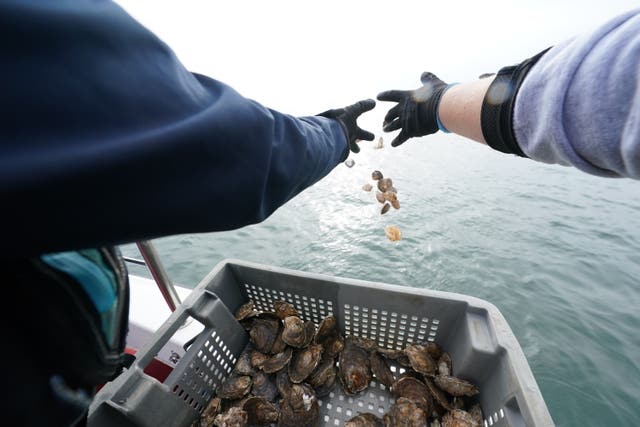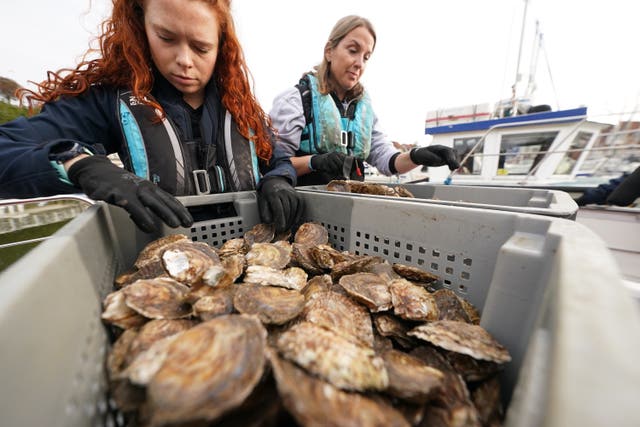A new reef the size of a football pitch has been created in the North Sea as a home for 10,000 native oysters in a conservation project that will help remove pollutants from the water.
The molluscs have been dubbed superheroes of the oceans because of their ability to filter 200 litres of water a day each – enough to fill a bath.
The Wild Oysters Project has seen 10,000 of them added by hand to the reef, which is a mile off Whitburn, Sunderland, and was made from 750 tonnes of local stone and scallop shells.
Conservationists said the reef should create a new marine ecosystem alongside the oysters.
The project is a partnership between the Zoological Society of London, Blue Marine Foundation, British Marine and local delivery partner Groundwork North East and Cumbria and was funded by People’s Postcode Lottery cash.
Project manager Celine Gamble said: “Today marks an important milestone in our journey to restore native oyster reefs to British coastlines.
“We’re optimistic that the 10,000 oysters will thrive, reproduce and grow on the new reef, which is the size of a football pitch, and we look forward to carefully monitoring their progress over the coming months.”
Oysters were once a popular delicacy on the North East coast, but national numbers have declined by over 95% since the 1800s, with the significant decline due to habitat loss, over-harvesting, pollution and disease.

Ms Gamble added: “Native oyster reefs have disappeared from our British coastline, and with this, we have also lost the benefits that they bring, such as providing essential habitat for other marine species.
“We’re determined to bring the species back from the brink of extinction, which will in turn help contribute towards healthier and more resilient coastal waters across the UK.
“Despite their small size, we recognise oysters as ocean superheroes for making such a big impact within the marine coastal environment; they‘re capable of filtering approximately 200 litres of water a day – around a bathtub’s worth – which in turn contributes towards improving our coastal water quality.
“This new reef will give the native oyster population a chance to recover and kick-start the population’s natural growth along our coastline.”
The oysters will not be farmed to be eaten but will be left to reproduce and potentially spread to other coastal waters.

Ashleigh Tinlin-Mackenzie, local wild oysters marine ecology technical lead, Groundwork NE & Cumbria said the species had been a part of the North East culture for centuries, with oyster saloons and streets named after them.
She said: “But this is the first time they’ve been restored to our waters, where they have long been absent, until now.”
